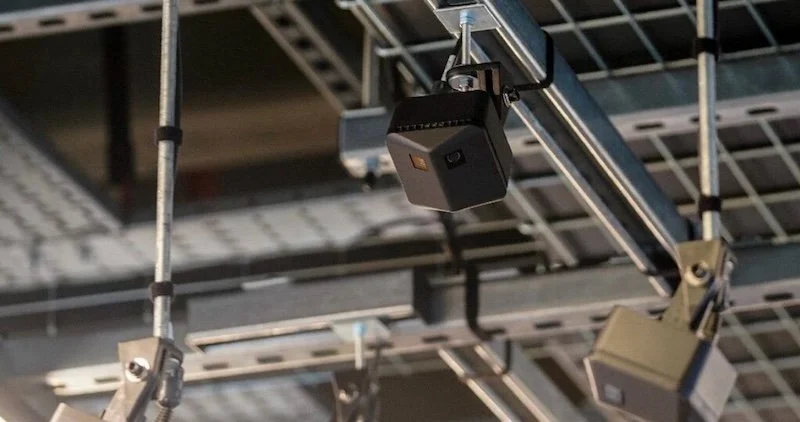Alipay+’s Jun Cai: here's why cross-border technology holds the key to growing Asian tourism to the UK
Reducing complexity and stress through technology will be key to restoring and growing a key portion of the UK tourist economy, says Jun Cai, UK Country Head at Alipay+.
Southeast Asian and Chinese tourism to the UK is an enormously valuable source of income for the country which needs to be specially curated and nourished to reap its full potential. The Office for National Statistics records visitor number by country of origin and how much they spend.
Overall, the UK recorded approximately 419,000 visitors from the region in Q2 2024, when the latest report was created. China, Hong Kong, Japan and Thailand are the leading sources of visitors from the region, though the profile is actually very diverse - a large number dwarfing all but China are lumped together by the ONS as ‘Other Asian’. Between them, they spent £451 million in the UK during that quarter.
This is a significant sum, but it’s still down on pre-Covid levels. As VisitBritain notes, back in 2019, the UK received a record number of visits from the region, for example, citing 883,000 visits from Chinese citizens alone, culminating a decade of growth, and worth a total of £1.7 billion that year to the UK visitor economy.
These visitors almost disappeared entirely through the pandemic, for obvious reasons. The figures have been slowly on the mend since, with 2025 finally expected to mark a return to 2019 levels. Restoring this lost revenue and the growth trends of the 2010s is a priority for the UK’s tourism and hospitality sectors.
The UK, and especially London, is an extremely popular European destination for Asian tourists. Culture, shops and history trump sunny beaches for many of these travellers, fortunately for our country. Academic researchers along with VisitBritain have conducted polls of these visitors and notes that heritage sites, natural scenery and good customer service are the most favoured aspects of the UK for Asian tourists.
Shopping is the most popular activity for Southeast Asian visitors, with 74% making specific shopping trips during their stay. 97% left with a favourable view of the country, with Singaporeans being the most positive. Areas where visitors believe the country needed to improve, though, were actually around key tourist activities: shopping facilities, food, accommodation, entertainment and night life.
A lot of the frustrations and friction for visitors revolve around transportation and payments. Imagine a Malaysian tourist arriving at Heathrow and attempting to get to their hotel in the city centre. The combined power of UK transport services offers a wealth of choices: the Heathrow Express, two different Underground lines, bus services, taxis, minicabs, private hire vehicles and probably more.
A first time visitor doesn’t know which of these is best for their journey, their relative speed, comfort and costs, whether they need a ticket in advance or how they might pay for their journeys. Transport for London acknowledges many of these difficulties in its own user research.
Will your credit card or digital wallet be accepted on many or any of these options? Possibly it will: that depends if it’s Amex, Visa or Mastercard. Your mileage might vary if you’re carrying a UnionPay card, one of the most popular banks in Asia.
The friction continues to grow. Codewords and concepts that are familiar to natives, like Zones, Oyster Cards, Santander bikes, a multitude of electric bikes, tapping in and out, not to mention the beloved but increasingly bewildering London Underground map, all contrive to add up to a highly stressful first experience for visitors. These conventions create continual problems even for British visitors coming to London from the regions: it’s hard to think what it must be like for those for whom English is a foreign language.
Transport for London is only one part of the transport puzzle for foreign visitors, and its own recent changes - such as new named lines and overlaying the Overground rail network on top of the Underground map - have not reduced complexity.
Plus, the city is ancient, and its layout mirrors wards and paths established over literal millennia. In any case, that complexity is part of what visitors value most. No one would suggest that Venice would be improved by filling in the canals to make broader boulevards: similarly, the charms of Borough, Whitechapel and Shoreditch, for example, are linked to the unmarked alleys, mysterious cul-de-sacs and curving, cobbled roads.
If we are to simplify life for tourists, it will not be through physical or systemic change, at least not in the short term. Instead, we need to turn to technology.
Technology has the power to abstract the physical world and put the individual’s needs front and centre. A very relevant precursor example for abstraction is Harry Beck’s original London Underground map of 1933. Beck realised that if you’re on an underground railway, then distances and landmarks don’t matter.
Instead, as a draughtsman specialising in electronic schematics, he reimagined the map as a circuit diagram stripped back to the essentials: all you need to know is where to get on, change and get off. Remove what doesn’t matter and the next step for the individual becomes radically clarified.
Today’s mobile maps offer a second, complementary revolution in how geographical information is presented: they use GPS to put the person holding the phone at their very centre, rather than trying to find where you are by referencing landmarks, like with a paper map. You become the main character in the world, not another NPC somewhere at the edges. The best technology simplifies and personalises the world so you encounter no friction.
Imagine again, our Malaysian tourist arriving at Heathrow. It’s still crowded and noisy (technology isn’t that good, yet) but this time the traveller has tapped into her established, native-language digital wallet as soon as the plane’s engines stopped. It’s where she does 95% of her transactions, so popping it open is second nature.
The digital wallet super app knows she’s at Heathrow and knows the options for onward travel to the hotel. It consults the timetables and offers presented and determines that the best choices are either the Heathrow Express or - a little more costly but with a special offer and more comfortable - a taxi from FREENOW or Lyft.
The driver would be waiting with a Malay sign on his tablet in the arrivals hall. Our traveller opts for the train this time. She can prepay right in the app and the ticket is added to her online wallet. Arrows onscreen show the way from the customs gate right to the correct platform.
At Paddington Station, the app has prebooked a minicab for the last leg. During the rail trip, it has presented various options for an evening meal, based upon the preferences and price options it’s learned from prior trips. It'll book the table and show directions once the traveller has made her choice.
None of that is science fiction. It’s all available now. There are still gaps - where certain databases and APIs aren’t available, or where the infrastructure to conduct payments, in particular, is yet to be hooked together. There are businesses that still need to tap into the tourism economy by adopting truly international payment methods: those that don’t are leaving money on the table that they would almost certainly prefer to pick up.
Pushing to close this last mile in interoperability should be an imperative for anyone in the tourism, retail and hospitality industries. And it isn’t enormously difficult, especially in light of the potential rewards from making it work. Making tourists feel at home, that they can trust their established technology wherever they are, will be key to growing their custom.
































Continue reading…